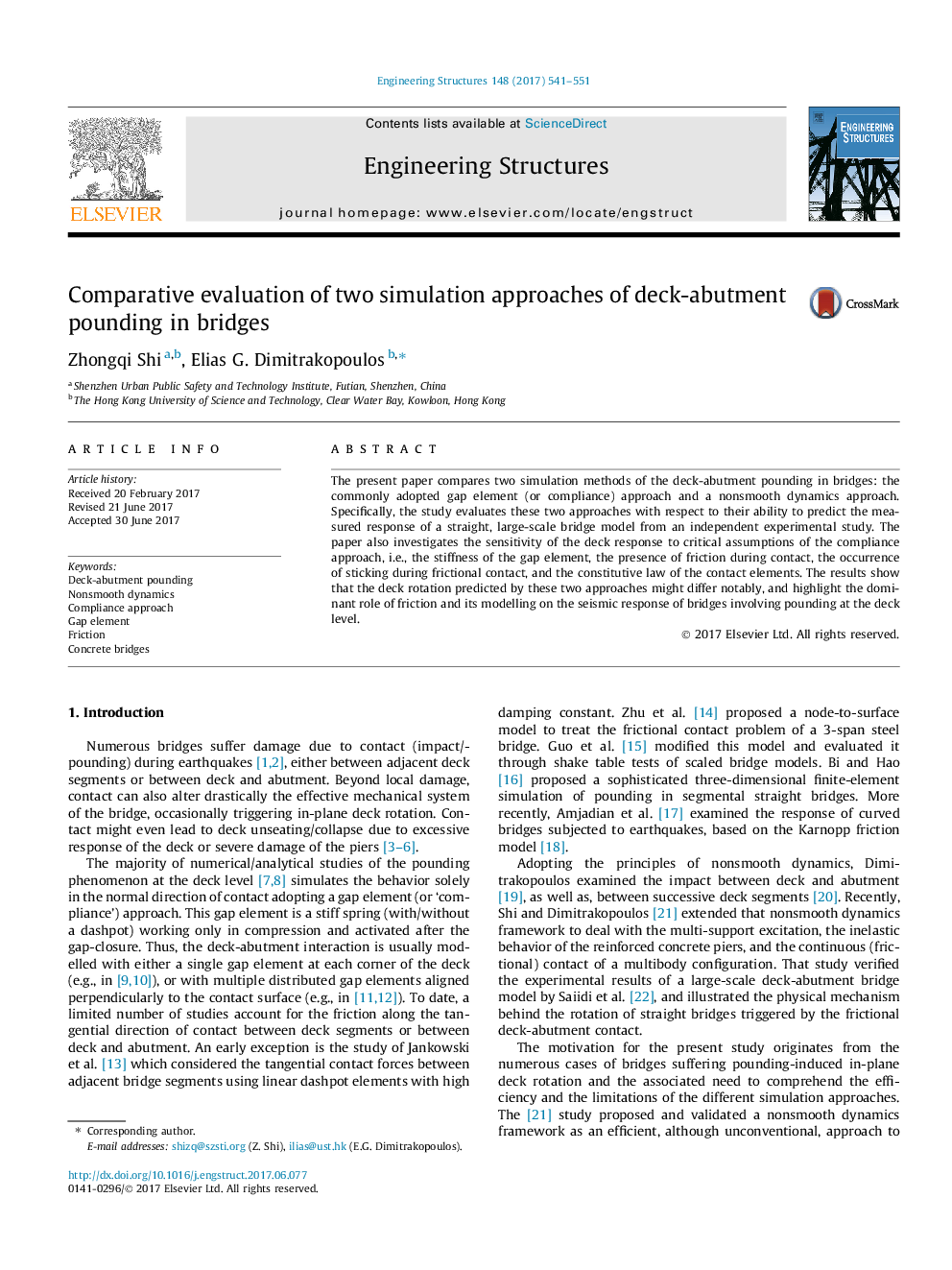| Article ID | Journal | Published Year | Pages | File Type |
|---|---|---|---|---|
| 4920019 | Engineering Structures | 2017 | 11 Pages |
Abstract
The present paper compares two simulation methods of the deck-abutment pounding in bridges: the commonly adopted gap element (or compliance) approach and a nonsmooth dynamics approach. Specifically, the study evaluates these two approaches with respect to their ability to predict the measured response of a straight, large-scale bridge model from an independent experimental study. The paper also investigates the sensitivity of the deck response to critical assumptions of the compliance approach, i.e., the stiffness of the gap element, the presence of friction during contact, the occurrence of sticking during frictional contact, and the constitutive law of the contact elements. The results show that the deck rotation predicted by these two approaches might differ notably, and highlight the dominant role of friction and its modelling on the seismic response of bridges involving pounding at the deck level.
Related Topics
Physical Sciences and Engineering
Earth and Planetary Sciences
Geotechnical Engineering and Engineering Geology
Authors
Zhongqi Shi, Elias G. Dimitrakopoulos,
